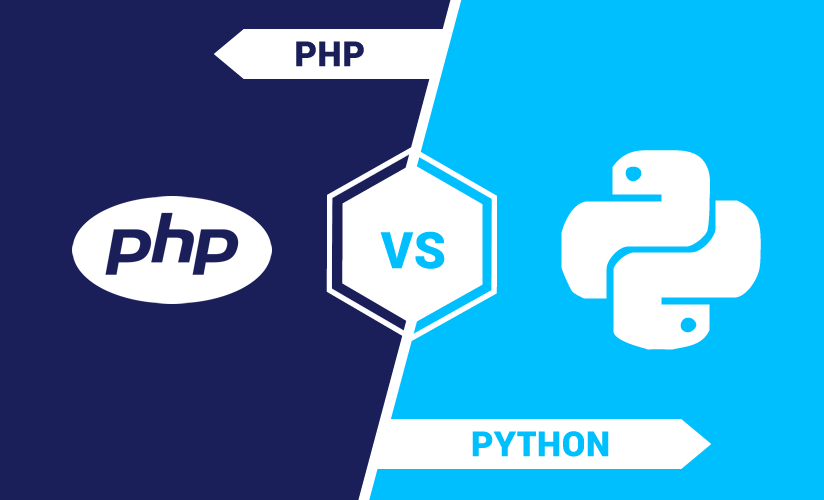How AngularJS is Transforming Frontend Development for Businesses

Are you struggling to keep up with the ever-evolving demands of frontend development? Are you searching for a solution that can transform your business’s web applications and propel your success in the digital world? Look no further! In this blog, we delve into the world of AngularJS, a powerful framework that is revolutionizing frontend development for businesses. We address the challenges faced by businesses in creating engaging user experiences, ensuring scalability and performance, and maintaining code quality.
Join us as we explore how AngularJS is the answer to your frontend development woes, providing you with the tools and techniques to transform your applications and elevate your business to new heights. Get ready to unlock the potential of AngularJS and embark on a journey of innovation and success!
Section 1: Streamlining Development Processes
Modular Architecture:
AngularJS’s modular architecture is a key factor in streamlining development processes for businesses. By breaking down complex applications into smaller, self-contained modules, AngularJS promotes code organization and reusability. Angularjs Developers can focus on developing individual modules independently, enabling parallel development and reducing dependencies between different parts of the application.
This modularity simplifies the debugging and maintenance processes, as issues can be isolated to specific modules rather than impacting the entire application. As a result, development teams can work more efficiently, collaborate seamlessly, and deliver projects on time.
Code Reusability:
AngularJS promotes the concept of code reusability, which significantly streamlines development processes. Developers can create reusable components that encapsulate specific functionalities or UI elements. These components can be leveraged across different projects or within the same application, eliminating the need to rewrite code from scratch.
This approach not only saves time but also ensures consistency and reduces the risk of introducing errors. Developers can focus on building unique features or customizing existing components, accelerating the development process and fostering a more agile development environment.
Dependency Injection:
AngularJS’s dependency injection system simplifies the management of dependencies within an application, further streamlining development processes. By allowing components to declare their dependencies rather than creating them directly, AngularJS facilitates loose coupling and enhances code maintainability.
Developers can easily swap out dependencies or update them without affecting the entire application. This flexibility speeds up development cycles, as teams can focus on implementing specific functionalities without worrying about the intricate details of dependency management.
Development Tools and Productivity Boosters:
AngularJS provides a comprehensive set of development tools and productivity boosters that streamline frontend development for businesses. Integrated development environments (IDEs) such as Visual Studio Code offer robust support for AngularJS, providing features like code completion, syntax highlighting, and debugging capabilities.
Additionally, Angular CLI (Command Line Interface) simplifies project setup, automates repetitive tasks, and facilitates efficient code generation. These tools enhance developer productivity, reduce development overhead, and enable teams to focus on building high-quality applications.
Collaboration and Version Control:
AngularJS’s modular architecture, combined with the use of version control systems like Git, facilitates seamless collaboration among development teams. By breaking down the application into modular components, different team members can work on different parts simultaneously.
Version control allows angularJS developers to track changes, merge code efficiently, and roll back to previous versions if necessary. This collaborative approach promotes efficient teamwork, minimizes conflicts, and improves overall project management and efficiency.
Read Our Page : Front End Developers
Continuous Integration and Deployment:
AngularJS integrates well with continuous integration and deployment (CI/CD) pipelines, streamlining the process of building, testing, and deploying applications. CI/CD tools can be configured to automatically trigger builds, run tests, and deploy applications to various environments.
This automated approach ensures faster feedback loops, reduces the risk of human error, and enables businesses to deliver new features and updates more rapidly. By incorporating AngularJS into CI/CD pipelines, businesses can achieve efficient and reliable application deployment, enhancing overall development workflows.
Section 2: Enhancing User Experience 
AngularJS revolutionizes frontend development for businesses by providing powerful features that enhance the user experience, resulting in more engaging and interactive web applications.
Two-Way Data Binding:
AngularJS’s two-way data binding is a fundamental feature that greatly enhances the user experience. With two-way data binding, any changes made to the data model are automatically reflected in the view, and vice versa.
This real-time synchronization eliminates the need for manual DOM manipulation and ensures that the user interface remains up-to-date with the underlying data. As a result, users experience a seamless and responsive interface, as changes in data are immediately propagated throughout the application.
Dynamic Single Page Applications (SPAs):
AngularJS empowers businesses to build dynamic single page applications (SPAs) where content is loaded dynamically without the need for page refresh. SPAs provide a fluid and uninterrupted user experience similar to desktop applications.
AngularJS’s built-in routing capabilities enable smooth navigation within the application, allowing users to move between different views and sections without the delay of page reloads. This improves overall responsiveness, reduces server load, and creates a more immersive and engaging experience for users.
Customizable User Interfaces:
AngularJS allows businesses to create highly customizable user interfaces that align with their brand identity and user preferences. Through custom directives, businesses can define unique UI components and behaviors, providing a tailored experience for their users.
Custom directives enable the creation of interactive elements, animations, and complex functionalities that enhance user engagement. By leveraging AngularJS’s flexibility, businesses can create visually appealing and intuitive interfaces that leave a lasting impression on their users.
Read Our Old Blog : Frontend Development Best Practices: Boost Your Website’s Performance
Form Validation and Error Handling:
AngularJS simplifies form validation and error handling, leading to an improved user experience. The framework provides built-in form validation mechanisms, allowing developers to easily define validation rules and error messages.
Users receive immediate feedback on input errors, guiding them towards correct data entry. By seamlessly integrating validation into the user interface, AngularJS ensures data integrity and enhances the overall usability of web forms.
Internationalization and Localization:
AngularJS facilitates the localization and internationalization of web applications, catering to users from diverse linguistic and cultural backgrounds. The framework provides powerful tools and features for managing multilingual content, including dynamic language switching, localization of date and number formats, and translation support.
This enables businesses to create applications that adapt to the user’s language preferences, providing a personalized and inclusive experience.
Mobile Responsiveness:
In today’s mobile-centric world, AngularJS excels in creating mobile-responsive web applications. The framework supports responsive design principles and provides tools to build adaptive layouts that adjust seamlessly to different screen sizes.
AngularJS’s responsive capabilities ensure that web applications deliver a consistent and optimized user experience across various devices, including smartphones and tablets. This flexibility allows businesses to reach a wider audience and ensures that users can access their applications on any device without compromising usability.
Section 3: Extensibility and Customization
AngularJS offers businesses extensive opportunities for extensibility and customization, allowing them to tailor their frontend development to meet specific requirements and deliver unique user experiences.
AngularJS Ecosystem:
The capabilities of AngularJS are extended by a vibrant and thriving ecosystem of modules, libraries, and tools. Businesses can tap into this ecosystem to enhance AngularJS with additional functionalities and features. There are numerous community-developed modules available for integration, covering areas such as data visualization, authentication, third-party integrations, and more.
This vast ecosystem provides businesses with a wide range of options for expanding the capabilities of their AngularJS applications, enabling them to address specific business needs and deliver a truly customized experience.
Custom Directives:
AngularJS empowers businesses to create custom directives, which are reusable components that encapsulate complex functionality or define unique user interface elements. Custom directives enable businesses to extend AngularJS’s HTML vocabulary, allowing them to create their own domain-specific language (DSL) for building application components.
By encapsulating specific behaviors, UI interactions, or data manipulation logic within custom directives, businesses can simplify development, ensure consistency across their applications, and promote code reusability. This level of customization allows businesses to create intuitive and tailored UI components that align with their branding and specific user experience requirements.
Integrating Third-Party Libraries:
AngularJS provides seamless integration capabilities for incorporating third-party libraries and frameworks into applications. This flexibility allows businesses to leverage existing libraries and tools that align with their Angularjs development Company needs. For example, businesses can integrate popular libraries like D3.js for advanced data visualization or lodash for enhanced data manipulation.
By integrating third-party libraries, businesses can leverage well-established solutions and benefit from the wider community support surrounding those libraries. This integration enables businesses to extend AngularJS with specialized functionalities and take advantage of the vast ecosystem of existing tools and resources.
Custom Services and Filters:
AngularJS allows businesses to create custom services and filters, expanding the framework’s capabilities to meet specific business requirements. Custom services provide a way to encapsulate and share functionality across different parts of the application. Businesses can create services to handle complex business logic, data retrieval from APIs, or any other reusable functionality.
Custom filters, on the other hand, allow businesses to transform or format data in a customized way, such as applying custom formatting to dates or currency. By developing custom services and filters, businesses can tailor AngularJS to their unique needs, enhancing the overall functionality and customization of their applications.
Theming and Styling:
AngularJS provides flexibility for businesses to define and customize the visual styling of their applications. By leveraging CSS frameworks like Bootstrap or Material Design, businesses can easily incorporate pre-defined themes and styles into their AngularJS applications.
Additionally, AngularJS allows for the creation of custom styles and themes, enabling businesses to align the application’s look and feel with their branding guidelines. This customization capability empowers businesses to create visually appealing, consistent, and immersive user experiences that align with their brand identity.
Read Our Blog : AngularJS vs ReactJS vs VueJS: Which is Best for Your Business?
Section 4: Testing and Maintainability
AngularJS offers businesses robust features and practices that promote effective testing and maintainability of their frontend applications. These features ensure code quality, ease of maintenance, and long-term stability.
Testability:
AngularJS is designed with testability in mind, making it easier for businesses to write comprehensive tests for their applications. The framework supports unit testing, allowing developers to write isolated tests for individual components.
By employing test-driven development (TDD) principles, businesses can ensure that their code meets the desired functionality and remains stable throughout development iterations. AngularJS provides tools like Karma and Jasmine, which facilitate the creation and execution of tests, making the testing process efficient and reliable.
Dependency Injection and Mocking:
AngularJS’s dependency injection (DI) system plays a crucial role in improving testability. DI enables businesses to easily inject mock dependencies into their components during testing, isolating them from external dependencies. This allows for better control over the test environment, ensuring that each component is tested in isolation.
By mocking dependencies, businesses can focus on testing the specific behavior of a component without relying on the actual implementation of its dependencies. This practice simplifies the testing process, enhances test coverage, and improves the overall reliability of the application.
Code Maintainability:
AngularJS promotes code maintainability through its modular architecture and separation of concerns. By breaking applications into smaller modules and components, developers can better organize and manage the codebase. This modular structure allows for easier code navigation, readability, and reusability.
When changes or updates are required, developers can locate and modify specific modules or components without affecting the entire application. This approach reduces the risk of introducing bugs and enhances the maintainability of the code over time.
Code Structure and Best Practices:
AngularJS provides guidelines and best practices for structuring frontend applications. These practices ensure consistency and readability across the codebase, making it easier for developers to understand and maintain the application.
By following established conventions, businesses can improve code maintainability, facilitate collaboration among developers, and simplify future updates or refactoring tasks. AngularJS’s emphasis on well-structured code promotes code cleanliness, reducing complexity and technical debt.
End-to-End (E2E) Testing:
AngularJS supports end-to-end (E2E) testing, allowing businesses to test their applications across multiple components and interactions. E2E testing tools like Protractor enable the simulation of user interactions and verify the behavior of the application as a whole.
By automating E2E testing, businesses can identify and address potential issues that arise from component interactions, ensuring the overall stability and functionality of the application.
Documentation and Community Support:
AngularJS benefits from a robust community and comprehensive documentation, making it easier for businesses to maintain and troubleshoot their applications. The extensive documentation provides detailed explanations, examples, and best practices for working with AngularJS.
Additionally, the community actively contributes to forums, stack overflow, and other platforms, providing assistance and sharing insights. This wealth of resources ensures that businesses have the support and knowledge needed to maintain their AngularJS applications effectively.
Section 5: Scalability and Performance
AngularJS offers businesses the ability to create scalable and high-performing frontend applications that can handle increasing user loads and deliver a smooth user experience. The framework provides features and practices that optimize performance and facilitate scalability.
Virtual DOM and Performance Optimization:
AngularJS incorporates a virtual DOM (Document Object Model) to efficiently manage updates and minimize DOM manipulations. The virtual DOM acts as an intermediary between the application’s data model and the actual browser DOM, allowing AngularJS to intelligently update only the necessary parts of the DOM when changes occur. This approach significantly improves performance by reducing unnecessary reflows and repaints.
Additionally, AngularJS provides tools and techniques for optimizing performance, such as lazy loading, code splitting, and asynchronous loading of resources. These practices enhance the speed and responsiveness of the application, even when dealing with complex and data-intensive scenarios.
Caching and Data Management:
AngularJS enables businesses to implement efficient caching and data management strategies, which contribute to scalability and performance. The framework provides features like HTTP interceptors, which allow businesses to intercept and cache HTTP requests. By caching data on the client-side, AngularJS minimizes server round-trips, reduces network latency, and enhances application responsiveness.
Additionally, AngularJS provides mechanisms for managing client-side data efficiently, such as local storage and data synchronization with backend APIs. These capabilities improve overall performance by reducing data transfer and optimizing data access within the application.
Server-side Rendering (SSR):
AngularJS supports server-side rendering (SSR), a technique that generates HTML on the server and sends pre-rendered pages to the client. SSR improves performance by reducing the initial load time and enhancing search engine optimization (SEO) capabilities. With SSR, users receive rendered content faster, resulting in a perceived performance boost.
Additionally, search engines can easily crawl and index the pre-rendered pages, improving the visibility and discoverability of the application in search results. AngularJS provides built-in support for SSR, making it easier for businesses to implement this performance-enhancing technique.
Performance Monitoring and Optimization:
AngularJS offers tools and practices to monitor and optimize the performance of frontend applications. Businesses can leverage tools like Angular Performance Explorer to analyze the performance characteristics of their applications, identify performance bottlenecks, and make data-driven optimizations.
Additionally, AngularJS provides performance optimization techniques such as tree shaking, lazy loading, and Ahead-of-Time (AOT) compilation. These techniques reduce the size of the application’s code, optimize resource loading, and improve startup time. By actively monitoring and optimizing performance, businesses can ensure that their AngularJS applications remain scalable and performant as user loads increase.
Scalable Architecture and Component-based Development:
AngularJS’s component-based architecture enables businesses to create scalable frontend applications. By breaking down the application into smaller, reusable components, businesses can build modular and maintainable codebases. This modular approach allows for easier scaling by adding or removing components as needed.
Additionally, AngularJS’s dependency injection and hierarchical component structure facilitate the management and coordination of complex application structures. Businesses can leverage AngularJS’s architecture to build scalable applications that can handle increasing demands and adapt to evolving business requirements.
Load Balancing and Distributed Deployment:
AngularJS applications can benefit from load balancing and distributed deployment strategies to handle high user loads. By distributing the application across multiple servers or cloud instances, businesses can distribute the workload and improve performance and scalability.
Load balancing ensures that user requests are evenly distributed among the available servers, preventing any single server from becoming overloaded. This approach improves response times and allows the application to handle increased user traffic without experiencing performance degradation.
Wrapping it Up:
AngularJS has become a transformative force in frontend development, empowering businesses to build powerful and user-centric web applications. With its streamlined development processes, enhanced user experience, extensibility, testability, maintainability, and scalability, AngularJS offers a comprehensive solution for businesses seeking to stay ahead in today’s competitive digital landscape. By embracing AngularJS, businesses can unlock new possibilities and drive success through cutting-edge frontend development.
We’re honored to mention that our efforts have been recognized by renowned B2B review and research platforms such as GoodFirms, Clutch, MirrorView, and many more.
Similar Posts

App Design – How We Build Better Applications With Behavioral Psychology & Design Principles
Hundreds of thousands of apps, no-code tools, digital products, and millions of websites are available over the internet. While some are great successes, others don’t even exist for a large population. Only a few products succeed in hitting their target market and explode, while others live in the abyss of the internet. ...

6 Main Stages of the Software Product Development Lifecycle
You may not know that over 60% of software projects fail to meet the expected goals due to poor planning and implementation. What makes SDLC so significant is that it executes a very structured approach, ensuring quality, efficiency, and user satisfaction at every step, from the idea to launch and then to post-launch. Imenso Software […]...

Python vs PHP – Which One is Better?
Due to the fact that pretty much every business now needs an online presence, they also need those who can work with back-end development. This is as true for working with mobile apps as it is with websites. This makes those who have the skills necessary to work with programming tools like Python or PHP […]...









